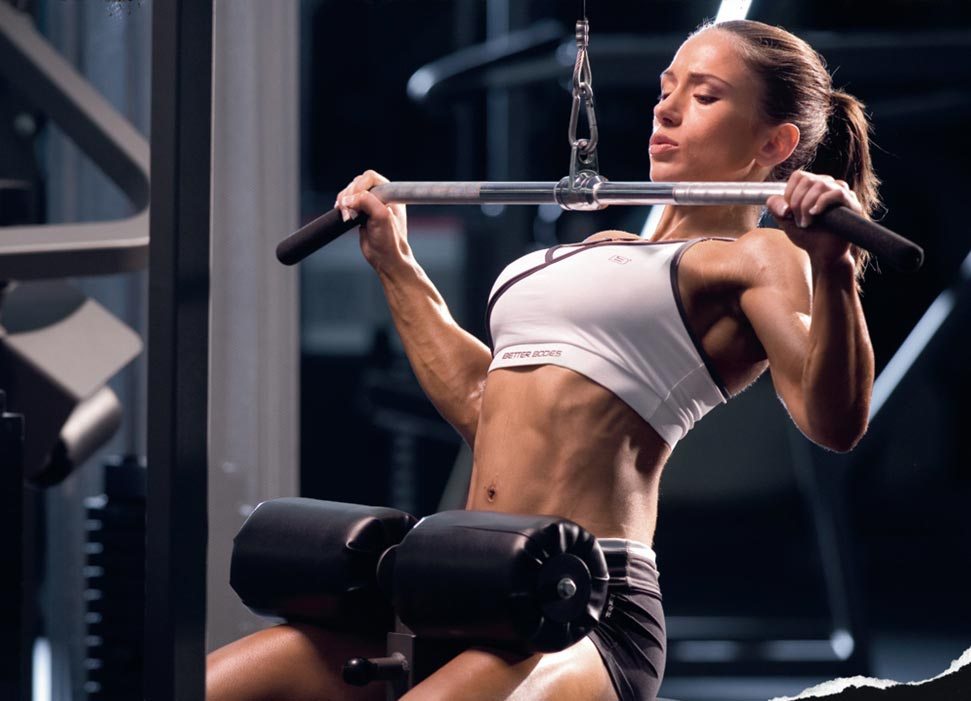Once you get involved with the gym life, you’ll find many women love to go for Creatine as a pre-workout or post-workout.
You’ll find tons of content on Creatine and how it impacts the muscle growth.
Here is the thing…
This article is designed for women who want to consume Creatine and use it in their daily routine.
Many women fear to take Creatine assuming it might disrupt their hormones or negatively affect their body.
Some even think you’ll have man-like muscles and get an ugly looking man body if consumed Creatine long enough.
Well, I’m here to clarify all the misconceptions circled Creatine and help you take the right decision.
Table Of Contents
What is Creatine & Its Origin?
Well, I would like to answer what Creatine is not:
- It’s not an anabolic steroid.
- It doesn’t disturb your hormones.
- It’s not only for hardcore bodybuilders.
- It doesn’t damage your kidneys.
- You can’t be addicted to it.
Creatine was discovered in the 1800s, and it was found necessary substance in the muscles of most animals (1).
Creatine Sources
Creatine is stored in the muscles of your body. 3 amino acids are responsible for its production and are excreted on a daily basis (2)
It can also be sourced externally from red meat and seafood. However, the best form of sourcing is with Creatine Monohydrate supplements (3)
If your body is not maintaining a proper amount of Creatine in muscles, you’ll quickly feel fatigued by the minimal amount of movement or exercise (3,4)
Supplementing with Creatine will increase your energy and thus make your workout longer. (5)
How Is Creatine Made In The Body?
Your body can naturally produce Creatine. Your kidney starts to create it and results come from Liver (6)
3 amino acids are responsible for this:
- Glycine
- Arginine
- methionine
Those three convert to a substance called “Creatin Phosphate & Phosphocreatine”, which is later stored in your skeletal muscles and used for energy (7)
Now here is the most vital part…
The body’s production of Creatine is at minimal amounts. Just keep you going and survive. It’s not useful for muscle growth or increasing strength (8).
Without external sources of Creatine, your body will be in trouble.
Majority of us will find ourselves consuming Creatine without even knowing through any kind of seafood or red meat (9).
Again, levels of creatine can remain low, which is why it can be supplemented into your routine.
How Is Creatine Manufactured Synthetically?
The best effective form of Creatine supplement is called “Creatine Monohydrate.” However, there are other types of Creatine on the market like (Creatine ethyl ester and Serum Creatine) (10)
I will discuss common creatine forms later in this article.
They are produced outside the body from cyanamide and sarcosine. Both ingredients are 100% natural (11).
It’s put in a machine that leads to Creatine Crystal-like form, which then dissolved to fine taste-less powder form. This makes sure it can be dissolved easily when mixed with milk or water to create a shake.
How Does Creatine Work on Women’s Body?
Without getting too involved in explaining the scientific evidence. Here is how it simply works:
Creatine increases the amount of Creatine Phosphate in muscles. During any workout your muscles need ATP to produce energy and the more Creatine phosphate in muscles the more ATP and thus more energy.
Science-Based Evidence:
ATP is considered the energy currency of your muscle cells. No ATP means no energy (12).
Once Creatine is in your body, it combines with phosphate which gives something called “Phosphocreatine” (13).
Your ATP relies heavily on Phosphocreatine for fuel to sustain.
It makes activities that require shorts bursts of intense energy, like weightlifting and sprinting, possible!
When you do squats or weight lifting your muscle contracts, this means ATP will break down to ADP (Adenosine Di-Phosphate). Along with an Enzyme named ATPase, it will produce the energy required for your Squats (13, 14)
The more squats you do, the more ATP supply will decrease. And if all the supply is finished, your muscles will stop contracting.
You’ll feel sudden fatigue.
However, here is the exciting part. Your body starts to create a new rapid mechanism by converting Phosphocreatine (PCr) to ATP.
In fact, this process might take to convert PCr to ATP in just 4 mins.
That’s why many experts advice to rest between heavy sets 2.5 – 4 mins (15).
Expected Benefits of Creatine For Women
When it comes to human anatomy, there is a major difference between the male body and female body. But metabolic and energy system work the same in both genders.
According to studies, females who are using Creatine during their workouts experience a significant difference in energy and strength.
Thus, if you are serious about your performance and want to get the body physique, you will need a daily dose of Creatine supplement to achieve your goals and take your body to the next level.
Here are other 3 main benefits Creatine affects female body
1- Weight Loss
Creatine indirectly enhances your metabolic rate through the increase of energy. An increase in metabolism leads your body to burn extra fat stored (16).
Women usually store more fat than men, and the reason has a slow metabolic rate.
Some women use Creatine for this benefit alone.
2- Increase Your Brain Functions
Your brain benefits from the energy that comes with Creatine. It significantly enhances your brain working capacity (17).
Creatine supplement for women can also treat Parkinson’s disease & prevents break down of brain cells.
3- Anti-aging For Women
Of course, nothing prevents aging of your skin. But the idea behind this comes during the postmenopause experience.
Women at this stage are physically fragile due to high risk of degenerative conditions such as osteoporosis.
Creatine supplement plays a significant role for women over 40s by preventing any degenerative conditions they may deal with (18).
Does Creatine Make Women Bloated?
There has been a common fear among first-time users of Creatine. And many women shy away from Creatine because hearing Creatine may cause water retention and thus bloating.
Here is the thing…
You might experience extra weight gain during the first few weeks of using Creatine. And you even might freak out.
But you’ll be much better when you find that your clothes fit perfectly after becoming leaner!
You see, weight gain wouldn’t be an issue if it’s muscle gain and fat loss.
And this exactly what Creatine does. Not only this, you’ll stop this weight gain after few weeks, and it will be reversed to weight loss showing off all the curvy body without the bulgy fats.
How Much Creatine Should A Woman Take?
All scientific evidence show’s that the best dose is from 3 – 5 grams per day.
It’s also not recommended to do the loading dose unless you are seeking faster results in a brief period. Many female athletes use this method for hardcore training.
If you decide only to consume food to gain creatine, you’ll probably need one kilogram of meat or fish (that’s about 2.2 pounds!) to get your 5 grams per day.
The best strategy to increase Creatine effectiveness is:
1- Find a brand that has pure 100% Creatine Monohydrate and nothing else.
2- The easiest and most effective time of day to take it is after your workout. The next best time to take is prior to your workout. You will feel the effects within a week.
3- For Pre-workout: Take your creatine on an empty stomach will help absorption. So taking it immediately after waking up in the morning is effective too. This is how I personally do it.
My Conclusion:
If you were searching “what does creatine do to a woman’s body” I hope I answered your question. Otherwise, if you still need more info about Creating. You can read my article on “What Does Creatine Do & How It Creates Muscles”
Do note there is a wild buzz on the market when it comes to best Creatine supplement for women. I would recommend checking on Battle Ready Fuel Creatine, many of my female clients are experiencing great results and it’s simply pure 100% Creatine Monohydrate.

